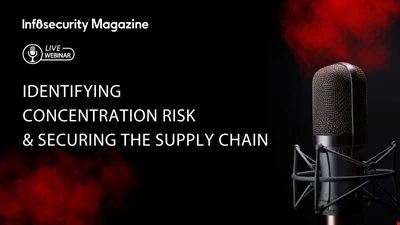Infosecurity Magazine Features

Loyalty cards: The security risks and the rewards
Loyalty cards – with their numerous security risks and few rewards – have really taken off. Can we trust that the commercial organisations that store our data will take good care of it? Cath Everett investigates and finds there’s no such thing as a free lunch...

Social Networking - A Risk to Information Security?
As the popularity of social networking sites continues to mount, it becomes increasingly important to consider the information security risks posed in the context of a wider data loss prevention and reputation management strategy. Cath Everett reports

The ID card debate
The latest news on ID cards – which saw Home Secretary Alan Johnson announce that holding ID cards should be a personal choice for British citizens – has kicked off the long-standing debate once again. Davey Winder takes a look at the pros and cons of the controversial initiative

A Blueprint for Secure Intellectual Property
Protecting intellectual property (IP) is imperative for any business. Providing a unique business model will encourage revenue, and keeping selected information from ambitious soon to be ex-employees should help to stave off the competition. Add a recession to the mix, complete with unscrupulous tactics, legal grey areas and an increase in redundancies, and the brewing threats might just boil over. Rob Stringer looks into the not-so-secret formula for keeping intellectual property secure

Is Patient Data Privacy on its Sickbed?
As we stand on the cusp of a massive healthcare modernization program, we face increasing challenges over healthcare data privacy. Danny Bradbury explores what’s happening in the US from a technological perspective, and what it means for our sensitive data

The user is not the enemy: How to increase information security usability
People have long been accused of being the ‘weakest link’ in information security, but what if lack of usability and information security training is actually at the heart of the matter? Wendy M. Grossman investigates

RFID: Coming to a Town Near You
RFID security may still be in its infancy, but, as Steve Gold discovers, the technology is rapidly becoming pervasive and an integral part of the everyday IT security landscape, despite significant teething problems

Watt Matters - the Smart Grid and the Information Security Industry
The IT and information security industries need to pay more attention to the electricity grid in the near future as more and more smart grids are set up with two-way communication systems. Simon Perry, principal associate analyst at Quocirca, explains why

Nine lives - when malware becomes self-modifying
As the Conficker (aka Downadup and Kido) worm proved when it first appeared in October 2008, there's more to a piece of malware code than meets the eye, especially when it is self-updating. But can self-updating also mean self-modifying? Steve Gold investigates whether an IT security manager's nightmare has become programming reality...

AI superbots threaten information security
The development of virtual servers and cloud computing has brought with it a new information security problem - artificially intelligent (AI) superbots. Steve Gold explains what can be done to defend against this totally new genre of information security threats

Social networking - a risk to information security?
As the popularity of social networking sites continues to mount, it becomes increasingly important to consider the information security risks posed in the context of a wider data loss prevention and reputation management strategy. Cath Everett reports

Tightening the purse strings on information security
As the recession continues to chew into information security budgets, and cyber criminals see increased opportunity for looting, CIOs must ensure that defenses remain strong and affordable, even if this means a little bargaining. Stephen Pritchard looks at how organizations can negotiate the rough seas ahead.

Information security in China: A license to print money
With 200 million internet users in China, and a predicted annual growth rate of 17% for the information security market until 2013, why would security vendors want to go anywhere else? William Knight investigates

The PCI Paradox - why PCI DSS isn't preventing data breaches
PCI DSS has been criticized as being both too prescriptive and too vague. The standard’s effectiveness has come under scrutiny once again as PCI compliant organizations have suffered huge data breaches in recent times. Danny Bradbury looks at the standard to find the root of the problem

Fasten your seatbelts: Information security and the travel industry
While the travel industry is yet to get a highly publicised data breach under its belt, the potential for vulnerability is sky-high. Wendy M. Grossman looks at how the government’s ability to access and store data is complicating matters

Using Information Security to Protect Critical National Infrastructure: Energy Sector is Hackers’ Biggest Target
The oil and gas industries are natural targets for cyber-criminals due to sensitive data and very deep pockets. With the introduction of newer IT technologies, such as wireless and even social networking, the jobs of the information security teams are not getting any easier. John Sterlicchi reports
Data lost, not found: Why data loss is still prevalent in many organisations
Eighteen months on from the HMRC data loss scandal - where contractors lost the details of 25 million Britons - Stephen Pritchard investigates why there is little evidence that the rate of privacy breaches is falling

A breach a day will keep the patients away - information security in the health sector
The NHS web is made up of different management structures, different information security needs, and different budgets. Cath Everett looks for a medicine that will cure information security worries across the healthcare board

New Data Integrity Attacks on the Block
While the information security world has had its attention fixed on data loss prevention since the TJX breach in early 2007, it has failed to acknowledge the rising issue of data integrity attacks. Sarb Sembhi investigates a threat that he predicts will soon take the industry by storm.

Flattery will get you everywhere - social engineering and information security
The widespread availability of personal information, along with employees being exposed to more data than they need to know, is making it easier for hackers to bypass the ‘human firewall’ of information security. SA Mathieson reports on the rising threat of social engineering




